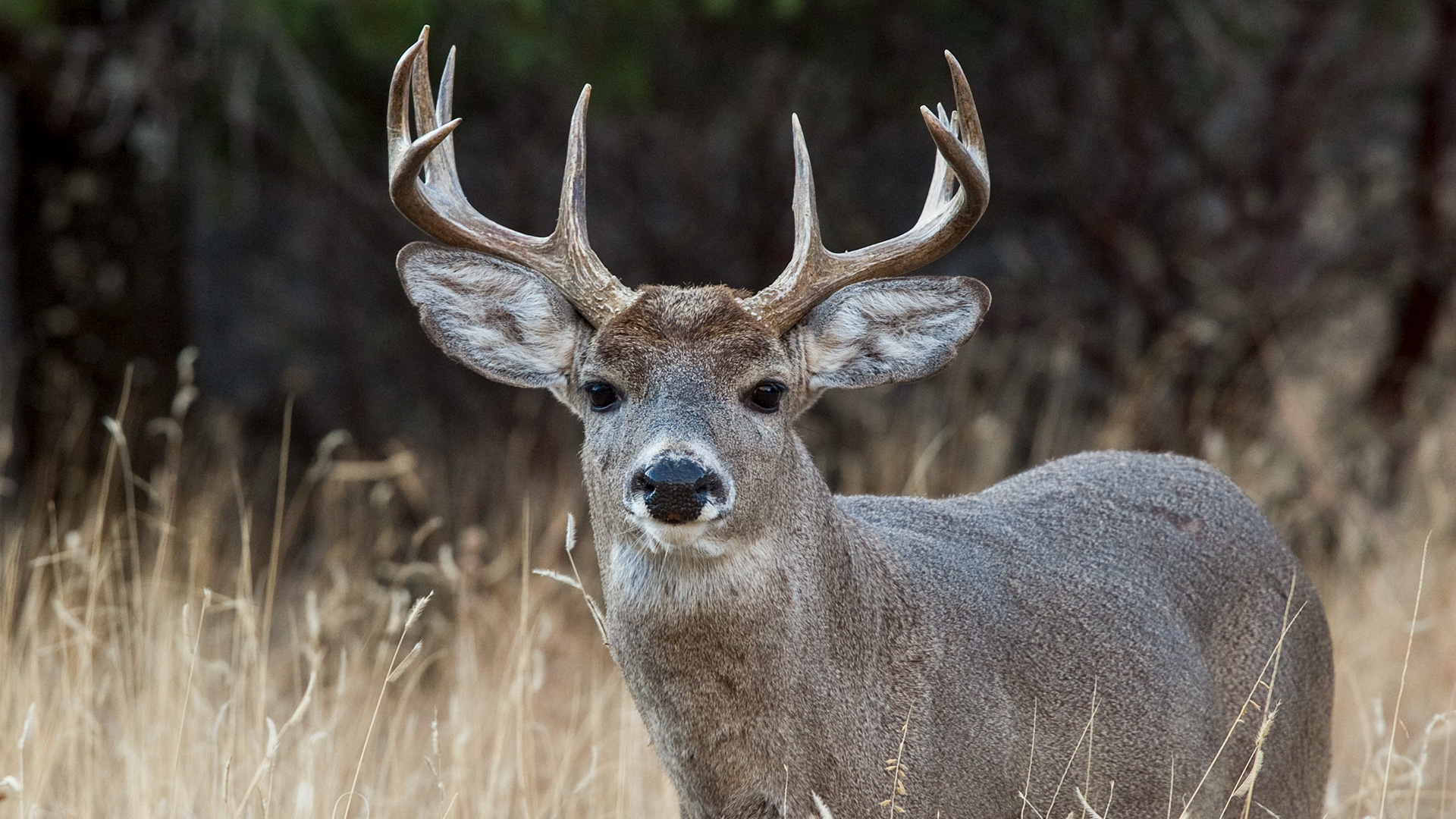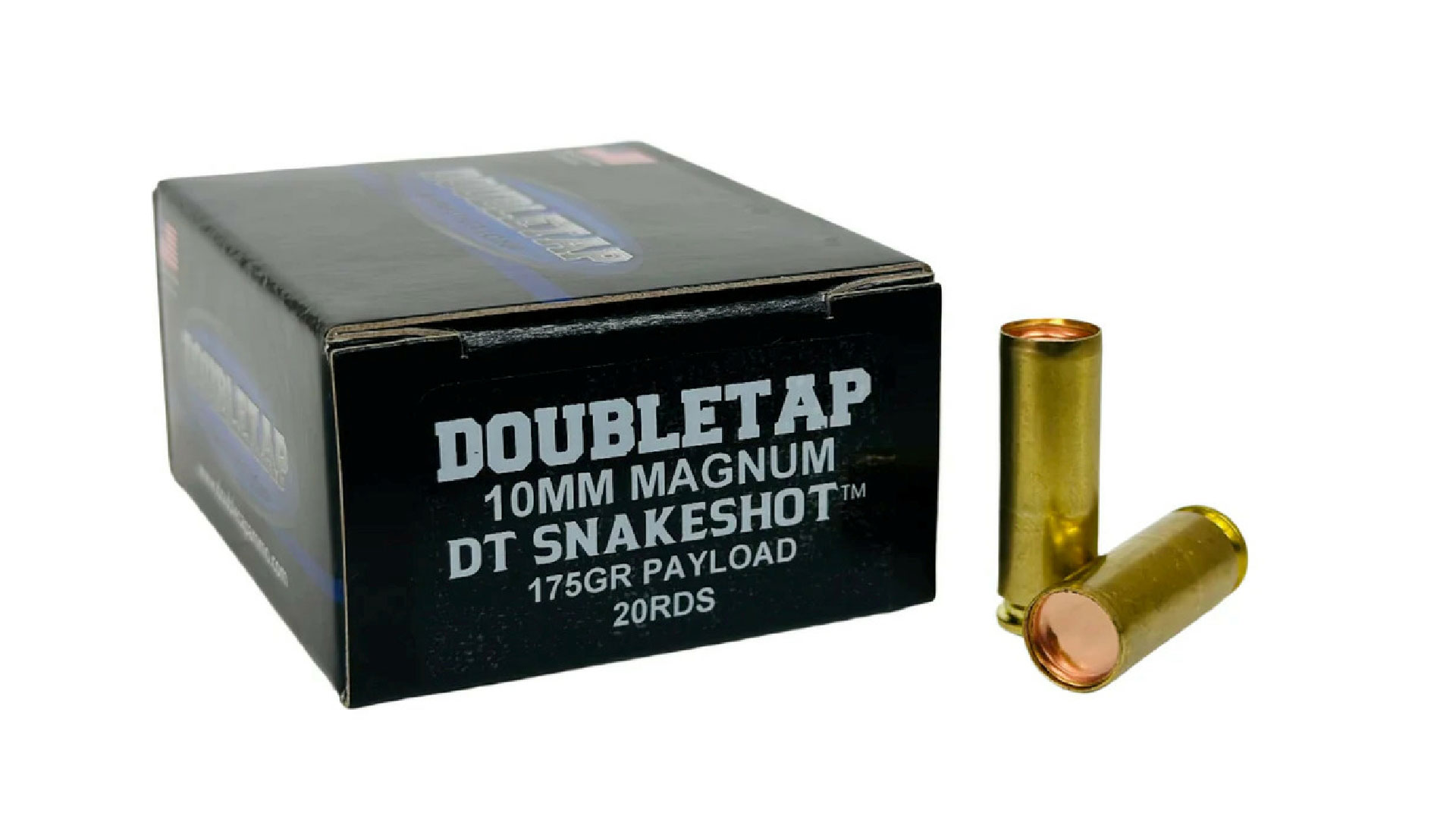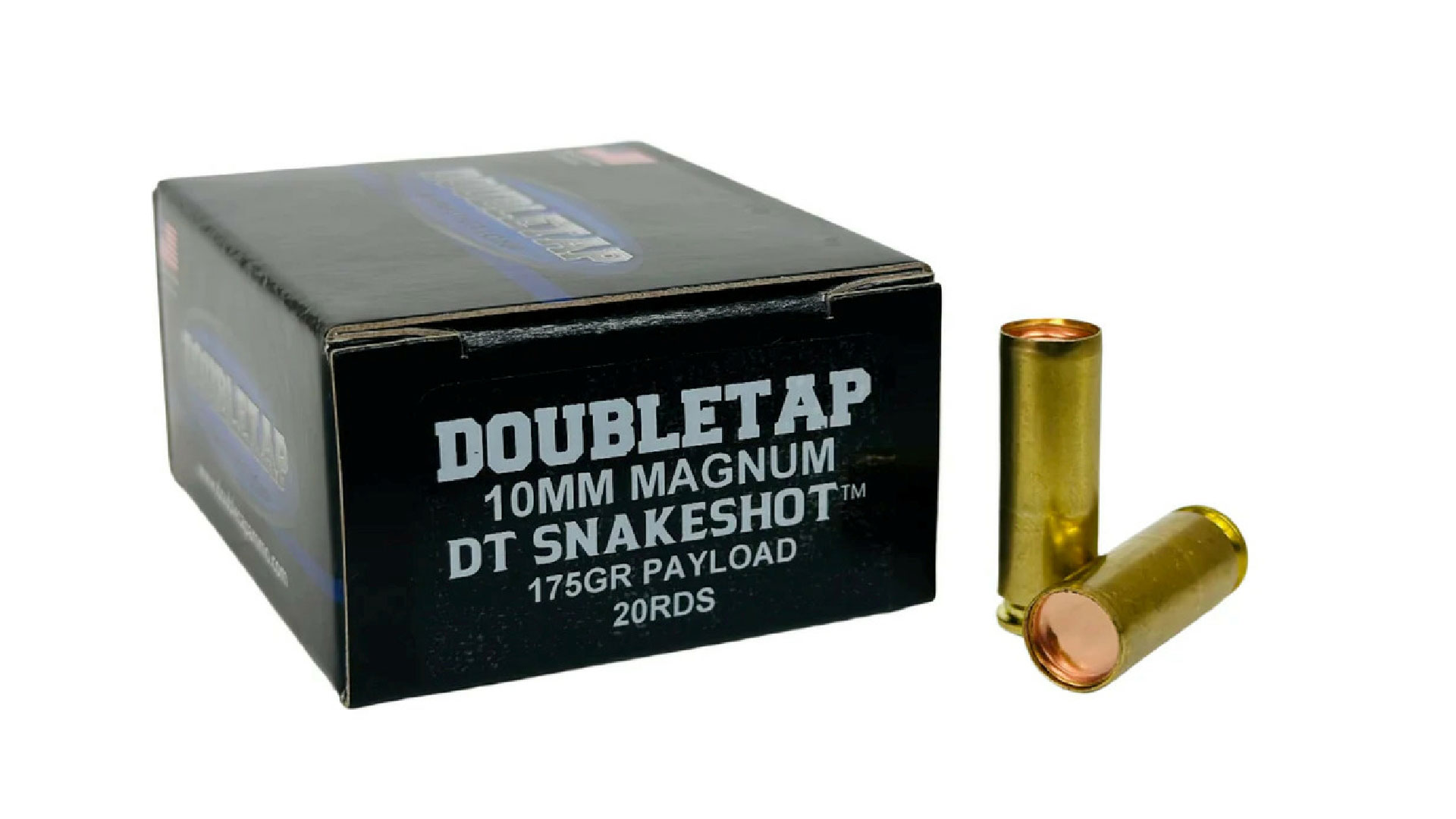
Stars winked into the sky one by one as darkness slowly cradled the jagged landscape in ebony folds. Our breath came deep and labored as we placed one jaded foot in front of the other, the pack straps from the heavy loads on our backs burning deeply into our shoulders. I turned to look back along the steep trail, bent half over and leaning heavily on my trekking poles as I watched my little 13-year-old daughter, Elayna, and my wife, Trina, labor up the incline. There was still just enough light to see the big Coues deer antlers atop Elayna’s pack and the smile showing through the exhaustion in her eyes. The truck was just over the ridge and our adventure—at least the hardcore backpack bivy hunting part of it—was almost at an end. It was easy to see that my ladies were ready for that. Triumphant, but definitely ready for a cushy seat in the truck and some rest.
This story began months earlier when my Half-Pint daughter drew a good Coues deer tag for a region deep in Arizona’s backcountry. She was the only one in our family to draw that hunt, much to our surprise. Arizona, just like the rest of the West, has recently experienced a massive increase in population as well as interest from out-of-state hunters. Tags have become significantly hard to draw, even for resident hunters.

I call Elayna my Half-Pint as a term of endearment. She is a little bitty thing but very pretty and strong, and capable of doing more chin-ups than I am. I was worried, though, about leading her into rough, steep backcountry territory with a heavy pack full of camp gear on her back. I couldn’t even find a frame pack small enough to fit her tiny torso. I did manage to set her up with a large daypack that somehow worked, and which sported enough capacity to contain her sleeping bag and pad, clothing, food, water and other necessities. It didn’t leave room for meat though, so Trina and I knew that if Elayna made a kill we would be responsible for packing it out. A steep, gnarly canyon guarded the path in and out of our hunting area, and I eyed it with some trepidation. It was gonna be a tough obstacle when carrying a load of gear as well as a deer on our backs.
Anytime you hunt the wilderness with only the gear you can carry on your back it becomes important to use very lightweight, high-quality gear. This importance doubles when you’re hunting wild sheep or Coues deer, thanks to the rugged, unforgiving nature of the terrain those animals like to inhabit. Steep, rock-rubble slopes, canyons and ridges are the norm. Sometimes the country is so vertical that it can be difficult to find a level spot big enough to pitch your tent. This adds to the challenge and the adventure, but it also introduces significant hardship.
Dusk overtook us the eve before opening day as we drove into Elayna’s hunting area. Forty-seven miles of nasty, rocky four-by road cost us three and a half hours of time, and it was dark before we crested a ridge and started into the backcountry territory we would be hunting. I dropped the truck into low gear and pointed the headlights down a boulder-strewn two-track toward the trailhead. We’d never hunted here before; in fact I’d never even laid eyes on the area. But a cowboy who’d worked in the region had given me a tip; he said there were deer here, including some mature bucks. I’d studied the place as well as I could with the help of my OnX app and Google Earth imagery. A tight bend in a big canyon formed an undulating ridge, and I believed that we might find deer there by working our way down the ridge from point to point, glassing the terrain ahead of us.
But first we had to get there. No way we could reach the ridge before dawn of opening day, so we set up camp on a little roadside flat and bedded down for some much-needed sleep. Tomorrow would come soon enough, and not far from camp there was a point we could glass from at dawn. We might even find a buck to stalk. After the morning hunt we could load our backpacks and begin the trek toward that unknown ridge.
Hunting with a youngster needs to be carefully orchestrated so that the child has a good time. The goal is, of course, to instill a passion for wildlife and wild places in the young person. This can be tricky to do, especially in today’s fast-paced, electronically ruled, sensory-overloaded world. I believe that in times past youth naturally gravitated toward hunting and adventuring out of doors. That was the most exciting, stimulating place to be found in their young lives. Now, artificial on-demand instant gratification is available at the touch of a screen. The vast majority of our youth have never even been exposed to the delights of sunshine, fresh air and the pursuit of nature. This is a shame, because the happiness and joy found outdoors are far more real and lasting than any found on a device.
My hope for this hunt with my little Half-Pint was to show her a good time, introduce her to some hardship (which, growing up on a working cattle ranch she is really no stranger to) and ultimately help her earn a buck the hard way. Three years earlier she had drawn a mule deer tag and was blessed with an easy opportunity to harvest a massive old deer in an area with very low deer density. That was awesome, and perfect for her at the time, but now it would be good for her to find the reward that comes with success after great effort.
We talked over whether she should hold out for a big Coues buck on this hunt, and both agreed that she shouldn’t be picky. We didn’t know the area, and just finding and stalking close enough for a shot at these wily desert whitetails can be very challenging. Any buck we spotted would be fair game.
Opening day dawned crisp and clear, with long fingers of sunlight chasing the shadows out of the timbered draws. We snuck onto vantage points and looked for deer, glassing hard as the morning progressed. The country looked good, and we could see wildlife trails bisecting slopes and cresting ridges, but we found no deer. Still we worked, moving from point to point, searching every ridge face and shadowed draw. Sometimes Coues deer don’t move until the morning warms and sunshine chases the chill from the hillsides, and we hoped that would prove true this day. But no dice; midday found us tired and still devoid of deer sightings. Back at camp we ate a quick bite and readied our gear for a sortie onto the distant ridge. I hoped fervently that we would find deer there. I wanted this hunt to be challenging for my Half-Pint, but not brutal.
We strapped our packs to my Yamaha Kodiak 700 and climbed aboard for the last rough mile to our jumping-off point above the canyon. Parking out of sight in the shadows of a juniper, we gathered our gear, strapped on our packs and headed into the unknown. I’d found an old trail into the canyon while looking at OnX, but there seemed to be no easy way out the opposite side of the canyon and onto the ridge. As we hiked I studied the canyon wall, trying to spot the best route up through the ribbon cliffs and outcroppings. It wasn’t going to be easy, but I wanted it to be safe.
A small brook babbled in the canyon bottom, confirming my hope that we could obtain water someplace closer than the truck, should our stay become prolonged. After a brief rest in the shadows we pointed our boots up the broken canyon face. It wasn’t long before I realized we had trouble. The slope was even steeper than expected and the footing loose and uncertain. Zigging and zagging, we worked our way upward. An hour passed, then another, and another. I was tired, my legs burning with effort. I could see tears of frustration and misery brimming on both my ladies’ faces. I feared the struggle was going to be too much, that they would have only bad memories of this hunt.
Finally, we reached the shoulder of the canyon wall. We rested, glassing back across the canyon whence we had come. We saw no deer, and I was beginning to worry that we would see none. The afternoon was far spent, and still we needed to reach the crest of our ridge. Shouldering our packs, we struggled onward.
More mellow now, the slope led upward to a small saddle just north of a tiny black-colored point atop our ridge. We arrived, slid our packs from grateful shoulders and collapsed in a heap. The canyon beyond our ridge was beautiful, with blue water gleaming in pools along the bottom. As my ladies rested and hydrated and soaked in the beauty of our surroundings, I could see appreciation on their faces. So far, the struggle had not been greater than the reward.
Dusk fell and we glassed intently for deer, hoping for at least a glimpse of a deer. Any deer would have done. We found nothing.
We cooked our dinner in the gloaming, freeze-dried vittles warmed with water boiled on my pocket rocket stove. I was worried but my ladies seemed content, happy to be done with the hardcore effort of the day. They shared a tiny backpack tent and I stretched my bed on the ground, watching the stars glitter and worrying about tomorrow. We’d seen no deer. Were they all at higher elevations? Would we find any deer in our area at all? I was truly concerned about my Half-Pint’s adventure—I didn’t want her experience to be all struggle and no reward. Tomorrow would tell.
Dawn on the second day was much like the first, clear and crisp and cold. This time though, we were in virgin territory, hard to access and unlikely to have been pressured during recent hunts. I hoped that would make a difference. Shouldering our mostly empty packs, we climbed the black point and pointed our binoculars at distant slopes. Elayna had her little rifle at her side, bipod snapped into place. She was ready.
Daylight overtook the desert and we glassed hard, trying to pick deer out of the shadows. Nothing showed, so we gathered our packs and moved to the next point down the ridge. This was new and unseen ground for us, and we were excited as we slipped carefully into the shelter of an overhanging cedar tree and set up to glass. Ten minutes later Trina whispered the words I’d been desperately hoping to hear: “I see a deer.”
There were three, does feeding together about 300 yards away. Excitedly we watched them, reacquainting our eyes with the way they looked amidst the ocotillo and prickly pear. Elayna watched them and wished for antlers, but we couldn’t produce any. I shifted my binocular to another area, a distant mesquite-laden flat far down the ridge. Immediately I spotted more deer and pointed them out, studying them through my spotting scope. I identified them as more does just as Trina spoke another highly anticipated sentence: “Oh, that’s a big buck!”
After swinging my glass to the swale she pointed out, it only took an instant to see she was right. Tall, wide antlers stood out clearly against the early sunlight as a buck and his two smaller cronies browsed on palo verde trees. I showed Elayna the bucks through the spotting scope and gloried in the excitement in her big blue eyes. The bucks were more than 700 yards away and undisturbed. It was time to make a stalk.
Trina stayed under our juniper to watch the deer through the spotting scope as Elayna and I scrambled cautiously down the slope, navigating to get under cover of the next ridge-top point so the bucks wouldn’t spot us closing on them. She was breathless with excitement and so was I; this was a golden opportunity, a big buck and terrain perfectly suited to an effective stalk. Scrambling through the cactus and catclaw, we started up the face of the next point.
Shaped like a little rimrock, the point stretched level and at an angle to the swale where the bucks still fed. Flat on our bellies my Half-Pint and I crawled to the rim and looked for the bucks. We spotted them, feeding on the far side of a palo verde. The big buck offered no shot, and as we waited for him to move Elayna settled in, her rifle steady atop a bipod and rear bag. The sun shown in her eyes, so I took off my Stetson and put it on her head, effectively shading her vision. The distance was 362 yards. Elayna turned the little dial on her scope to match the yardage. She was ready.
Long minutes ticked slowly by, and I watched Half-Pint watch the big buck. I could tell she was slightly uncomfortable lying there in the rocks, but she stayed focused and ready, calmly waiting for a shot. Then it happened: the buck walked into view and stopped broadside. I whispered, “Whenever you’re ready,” and before the words were finished the little Kimber crashed and the buck dropped in his tracks, down with one perfect shot.
 Half-Pint and her proud papa are all smiles just moments after she triggered a perfect 362-yard shot on her first Coues deer, thanks to good training and an accurate, manageable rifle.
Half-Pint and her proud papa are all smiles just moments after she triggered a perfect 362-yard shot on her first Coues deer, thanks to good training and an accurate, manageable rifle.
“He’s down! You got him—good shot!”
Elayna had already rammed another cartridge home in the chamber.
“He’s down? I got him?” she was breathless with excitement.
“Yes. You hit him absolutely perfect! Stay on him for a couple minutes in case he gets up, though.” I was confident the buck wouldn’t be getting up, but wanted her to learn the importance of being ready just in case.
We celebrated, and Trina hiked across to join us, the excitement evident on her face. She’d seen the whole thing unfold, watched our Half-Pint prepare for the shot, and seen the buck drop. Together, we made our way off the rim and toward the buck.
We celebrated again and Elayna gave a simple prayer of thanks for the deer, for his life and the sustenance he would provide. We ate a late breakfast and retold the story. We took photos and then we processed the buck, boning his meat into freezer bags for the long hike out of the backcountry. My ladies still surfed the waves of excitement and adrenaline and I was proud of them, Trina for her good spotting and Elayna for making a perfect one-shot kill, proud of them both for their effort and perseverance under difficult circumstances.
 That’s a happy mama-daughter duo. Both will remember this adventure as a mixture of delight and misery. They conquered a tough quest and emerged victorious, stronger and closer for the experience.
That’s a happy mama-daughter duo. Both will remember this adventure as a mixture of delight and misery. They conquered a tough quest and emerged victorious, stronger and closer for the experience.
The long pack out still loomed, ominous with danger during the descent off the canyon wall. Shouldering our heavy packs, we climbed back to camp, broke down the tent and packed our gear, and then pointed our boots toward the canyon and the long climb beyond.
The creek still babbled and we filtered water, resting and hydrating. The descent had been bad, steep, brush-choked and dangerous. But we had made the bottom, and now the old trail would lead us up the steep mountain toward the truck and home. My ladies were happy, enjoying the fresh damp air and fall foliage along the creek. I knew the climb would be hard but they would get it done, and that the rewards already outweighed the struggle. Our Half-Pint had gotten a buck, earned the hard way.
Kimber Mountain Ascent
Elayna needed a compact, superlight rifle for this hunt, something she could carry through steep, rugged terrain, something balanced and manageable for her small size. I wanted her rifle to be accurate, too—if she could consistently place precise shots out to 500 yards her odds of making a kill would increase significantly. It took some looking, but I finally found exactly what I wanted: a Kimber Mountain Ascent chambered in 6.5 Creedmoor. Bare, the rifle weighed less than 5 pounds. I mounted a lovely little Leupold 2.5-8x32 scope in lightweight Talley rings and a Spartan Javelin Pro bipod up front. This brought total weight to 6 pounds, 4 ounces—still beautifully lightweight.

Accuracy was very good as well, easily grouping sub-MOA with 143-grain Hornady Precision Hunter ammo. Equipped with her bipod and a rear bag, Half-Pint was able to hold all of her shots on vital-sized steel targets out to 600 yards. She wouldn’t shoot that far on a deer, but it was good to have the level of precision and accuracy. Our preparation paid off with a perfectly clean kill, ideal for a young hunter learning the ropes.




































